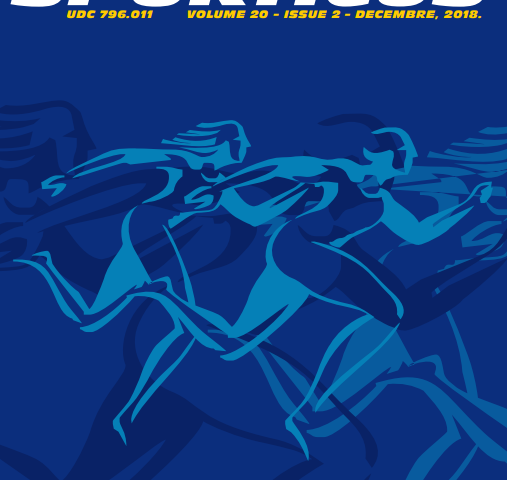Abstract
The study aims to present in detail the analysis of high-intensity movement during official football matches of the highest rank in Bosnia and Herzegovina. The data (such as maximum speed, the number of accelerations, the number of sprints, (V4) the distance of high-intensity running ≥19,8 km/h, and (V5) the distance of sprint ≥25,2 km/h) have been collected using 20 Hz GPS (Global Positioning System) in 13 football matches (11 matches of the domestic league, BHT PL BIH, and two matches of BIH CUP in the first part of the 2019-2020 season). In total, there were n=74 individual match observations, of which central defenders (CD, n=18); fullbacks (FB, n=13); central midfielders (CM, n=23); wide midfielders (WM, n=15); and forwards (FW, n=5) were analyzed. The kinematic parameters were obtained by 20 Hz GPS Pro2 (GPEXE, Exelio Srl, Udine, Italy). The statistical analysis results have shown that the average maximum speed equaled 29,7±1,6 km/h, the number of accelerations 19,9±7,4, the number of sprints 3,4±2,7, the distance (V4) 481±163, and the distance (V5) 127±85. Considering the positions of the players on the field, the full-backs obtained the highest maximum speed of (FB) 30,7±1,1 km/h, while the wide-midfielders, on average, performed, the most accelerations 27,6±6,4, sprints 6,2±3,3, and ran the longest distance in V4 (677±156) and V5 (213±104) zones. This study analyzed the differences between players’ positions and quantified the physical demands of elite football players competing in the highest rank in Bosnia and Herzegovina. Based on the kinematic parameters data, the results show several statistical discrepancies related to the positions of the players in a match. The data offered in this study may be used in future analyses and comparisons. They represent the scientific ground for further construction and creation of specific training exercises concerning players’ positions.
Keywords: GPS, match analysis, the distance of sprint, accelerations


